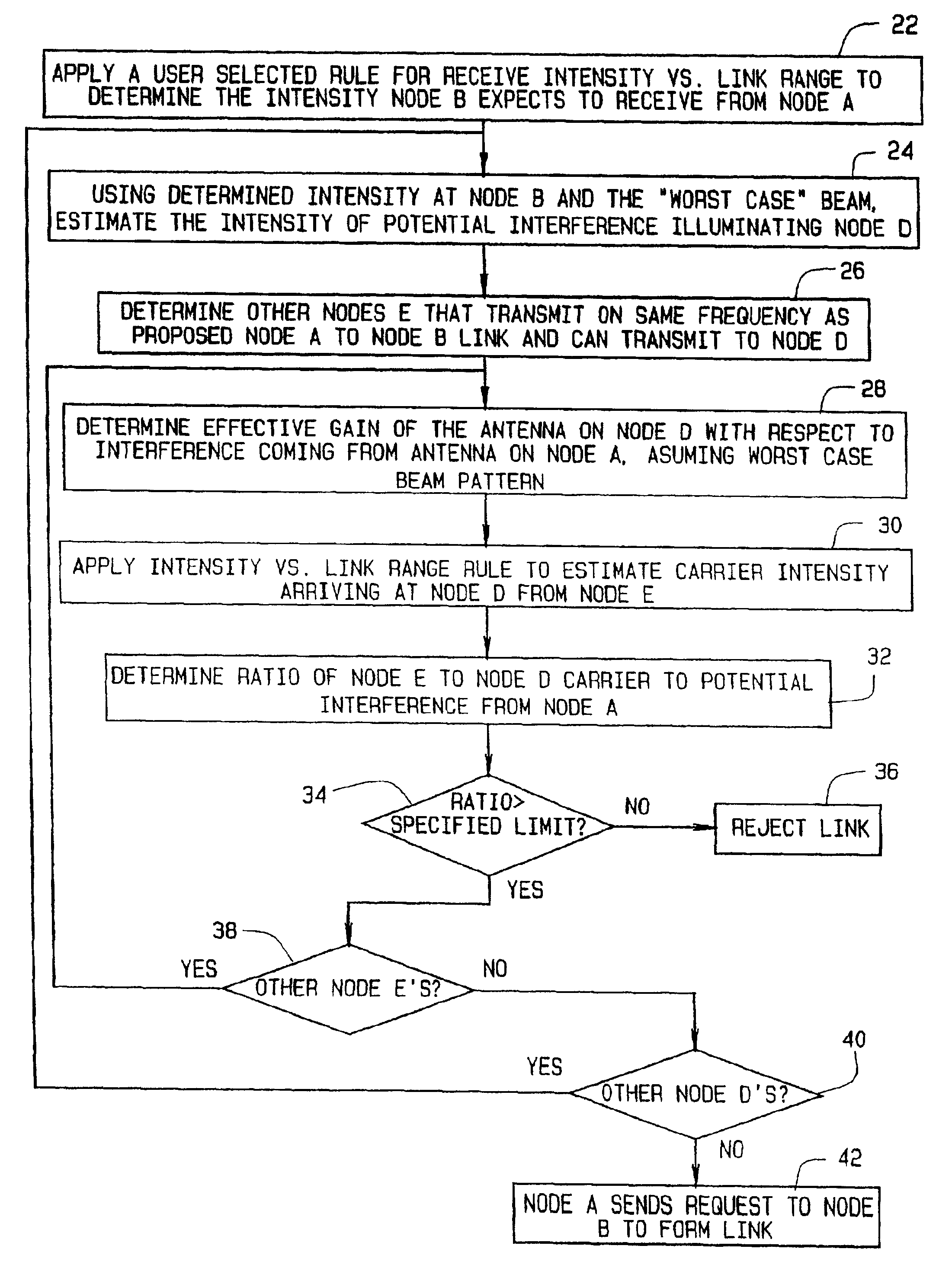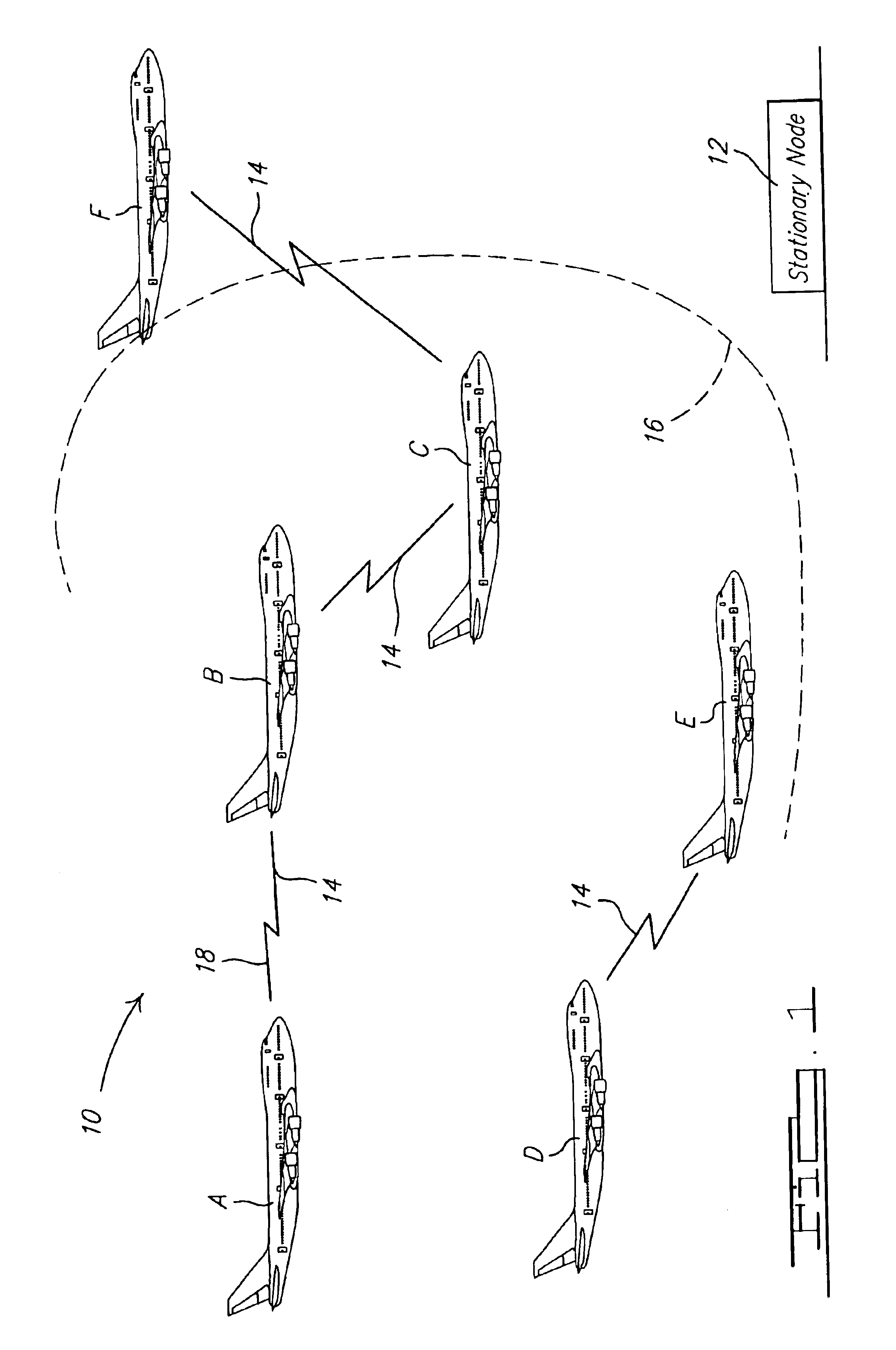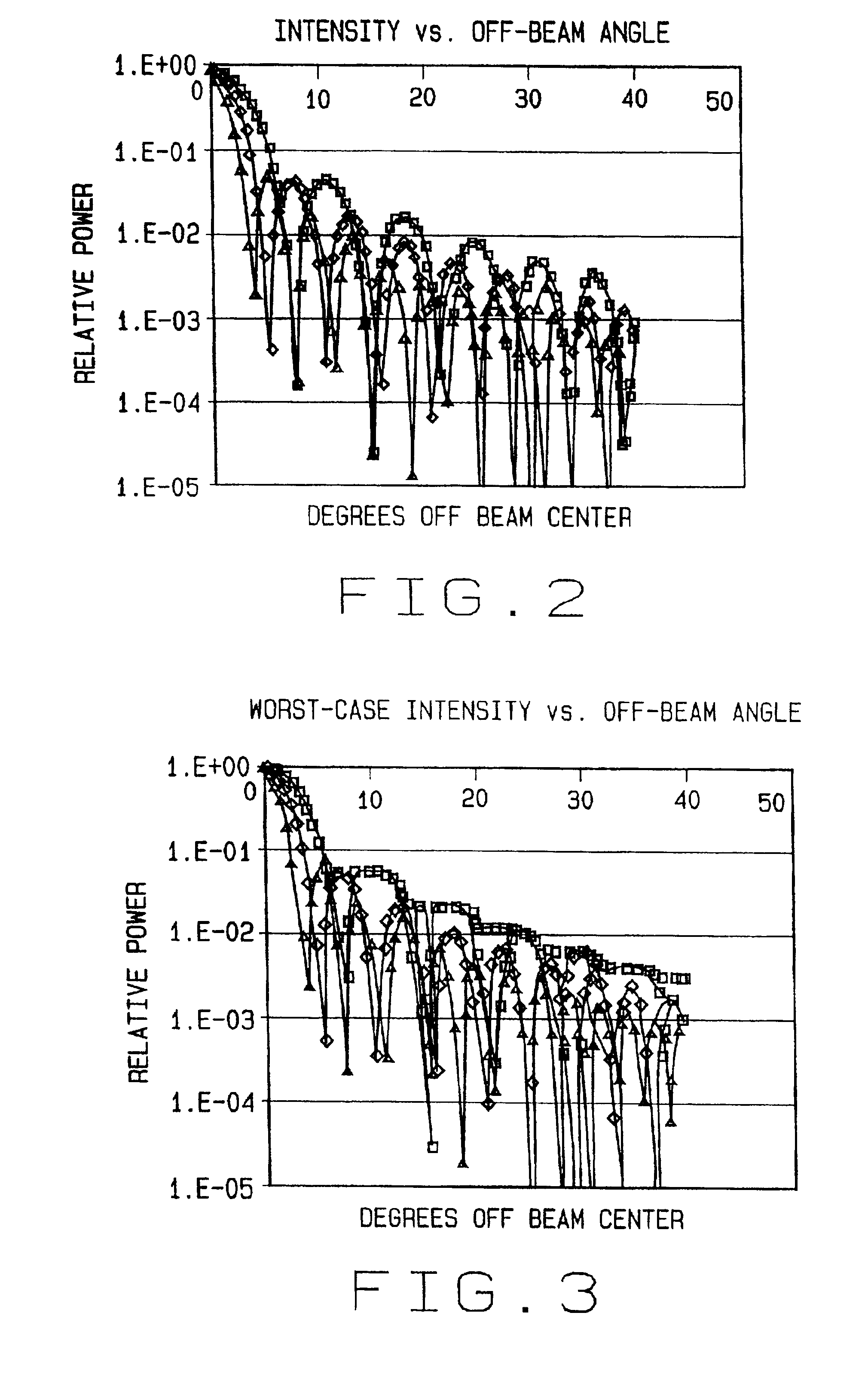Method and apparatus for reducing self-interference in a mobile network
a mobile network and self-interference technology, applied in the field of mobile communication systems, can solve the problems of self-interference, simple solution that does not work well in the network with airborne nodes, and frequency reuse methods that work well in the terrestrial environment will not work well in the airborne rf environment, so as to achieve the effect of reducing interferen
- Summary
- Abstract
- Description
- Claims
- Application Information
AI Technical Summary
Benefits of technology
Problems solved by technology
Method used
Image
Examples
Embodiment Construction
[0029]The following description of the preferred embodiment(s) is merely exemplary in nature and is in no way intended to limit the invention, its application, or uses.
[0030]As used herein, the designations “node A” and “node B” refer to nodes in the process of establishing a link. (A “link,” as used herein, is a wireless communication path.) The designation “node C” refers to a node other than node A in communication with, or capable of communicating with node B. The designations “node D” and “node E” refer to two nodes other than nodes A and B in communication with each other, or capable of linking with one another, but not necessarily with node A or with node B. From the standpoint of node A and node B in a network, there may be zero, one, or a plurality of nodes C, zero, one or a plurality of nodes D, and zero, one, or a plurality of nodes E. In addition, there may be zero, one, or a plurality of nodes E for any particular node D, as any particular node D may be in communication wi
PUM
 Login to view more
Login to view more Abstract
Description
Claims
Application Information
 Login to view more
Login to view more - R&D Engineer
- R&D Manager
- IP Professional
- Industry Leading Data Capabilities
- Powerful AI technology
- Patent DNA Extraction
Browse by: Latest US Patents, China's latest patents, Technical Efficacy Thesaurus, Application Domain, Technology Topic.
© 2024 PatSnap. All rights reserved.Legal|Privacy policy|Modern Slavery Act Transparency Statement|Sitemap



